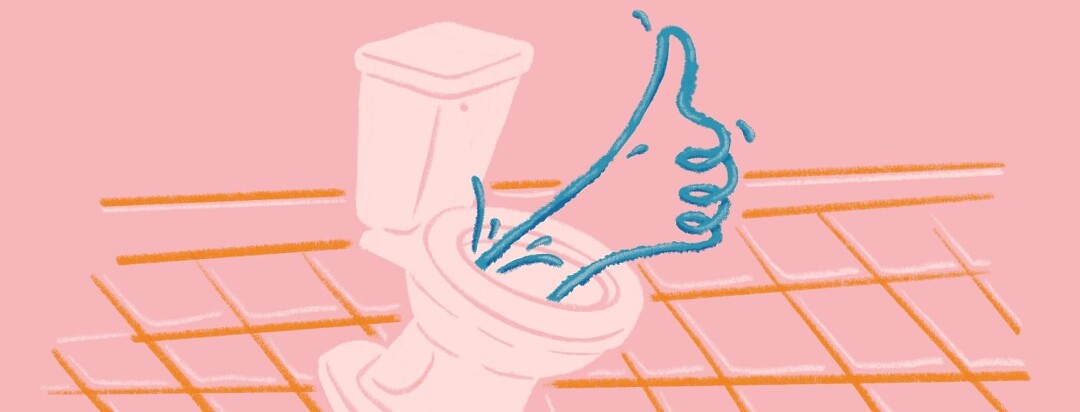My Switch to a Bidet for IBD
I live with Crohn's disease. And, on a typical day, I have 2-4 bowel movements, each requiring a couple of wipes at a minimum.
Like many other Crohn's or ulcerative colitis patients, my behind has become used to abrasive and continual wiping, but still acts out at times, leaving me feeling sensitive and uncomfortable in a very vulnerable spot.
Enter the bidet.
Life before the bidet: the toilet paper shortage
Let's rewind a bit to what gave me the final push to purchase my bidet.
You see, I take my toilet paper purchases very seriously. And I can't speak for every IBD patient, but I can absolutely tell you a few things I've experienced to be true. The best choice for my behind is Charmin Ultra Soft.
I always keep a minimum of 9 extra rolls on hand just in case. The travel-size rolls "for camping" are perfect to keep in one's bag or car for on-the-go stops that have less-than-ideal wiping options. I'm not kidding. I've done my trial and error research, and this set of specifications allows me the most comfort after going.
Access to toilet paper caused me massive levels of anxiety for nearly six months. While many joked about how the early days of the pandemic could and would lead to a toilet paper shortage due to people hoarding groceries and household items, they couldn't know or understand that this was consistently my biggest stressor.
Every time I would order curbside groceries or items from Amazon, it was hard if not impossible to find my toilet paper in stock, and oftentimes even when I had added it to my cart, the item would get canceled due to low or no supply.
To be honest, I'd been looking at bidet options for a while pre-pandemic, but I never had quite enough motivation to jump on this new purchase.
What is a bidet?
Let's start with the basics. A bidet is a simple plumbing fixture that allows you to wash your sensitive areas after you use the toilet. It uses a spray of water to remove any remaining residue on your behind.
This sounds ideal, right? It's like a shower for your hiney without the rest of you having to get wet or move around, and it reduces all of the friction that comes along with wiping.
Types of bidets
Now, did you know there are several different types of bidets?
Most traditionally, you may have seen a shallow toilet or small-looking sink beside the toilet. This is known as a stand-alone bidet and is most common to see when visiting abroad.
On the other end of the spectrum is the smallest option – a portable or travel bidet (think small water-bottle-looking item with angled nozzle).
In the middle, there are handheld bidets (a hose connected to your toilet plumbing with a sprayer on the end), built-in bidets which come already attached to a toilet seat (also known as a combo seat), and bidet attachments – which you can buy and install on the toilets you already have in your home.
I had been looking specifically at bidet attachments, which financially and logistically fit best for me.
While many options were sold out or on backorder at the beginning of the pandemic due to this very stressful toilet paper shortage, the one I decided on became available within a few month's time.
The bidet changed my IBD bathroom experience
Purchasing the bidet has revolutionized my bathroom experience, to be honest.
First, the bidet attachment I got was easy to install underneath the toilet seat I already had at home. It was also easy to learn how to use. The specific one I got only has one dial, and the knob moves clockwise to increase water pressure from behind, and counterclockwise to increase water pressure aimed at the front.
To be honest, I was a bit worried that the cold water would be assaulting on my nether-regions or make the experience unpleasant, but it has done neither of the above.
Bidet benefits for IBD symptoms
In fact, using the bidet makes my behind feel cleaner, it's significantly more comfortable than using regular toilet paper, and it has reduced my toilet paper use by nearly half.
It's been most advantageous when my stools are loose, burning, and frequent. And it gives my behind a rest from the routine nag of dry toilet paper.
If you've used a bidet, has it improved your bathroom experience?

Join the conversation